ASM Metals HandBook Vol. 8 - Mechanical Testing and Evaluation
Подождите немного. Документ загружается.

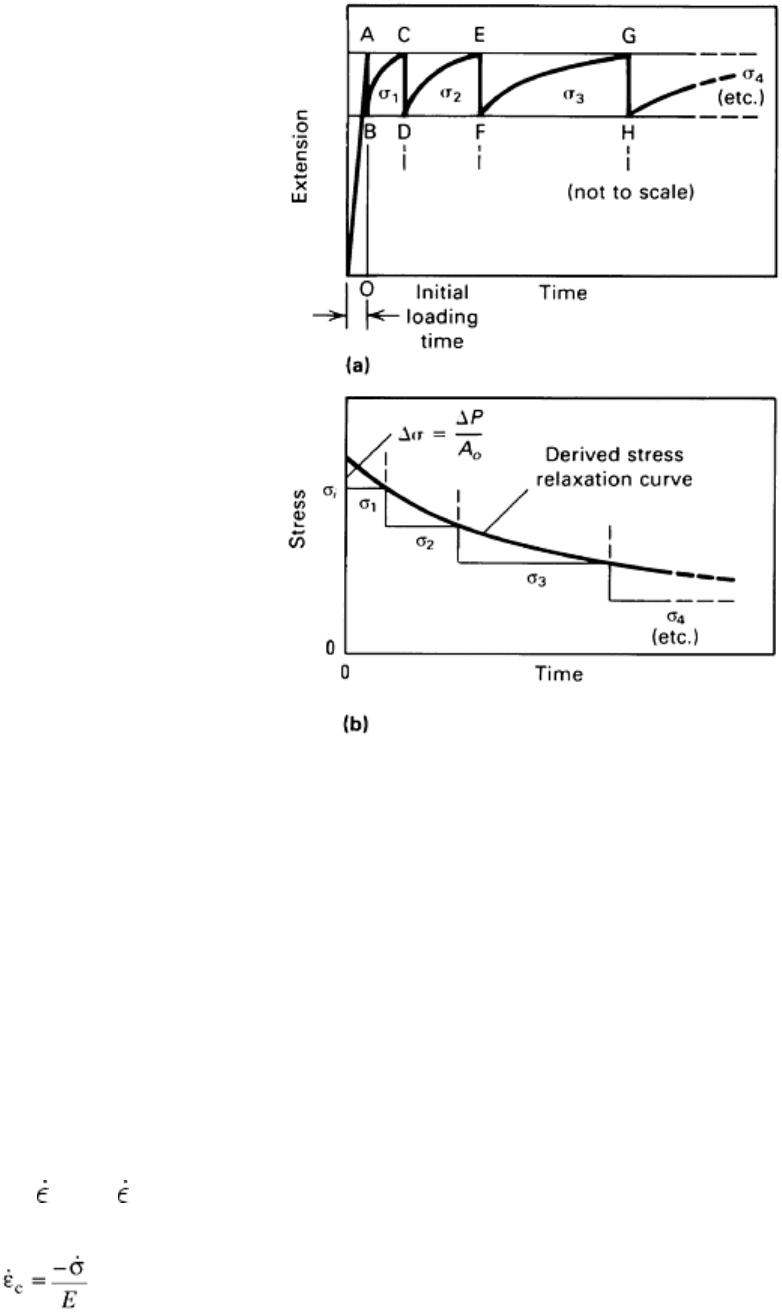
Fig. 3 Derivation of stress-relaxation curve for step-down creep test. (a) Constant extension
approximated by a step-down creep test. (b) Stress-time relation
The components of strain can be considered to be elastic strain, ε
e
, time-independent plastic strain (e.g., on
loading), ε
p
, and time-dependent creep strain, ε
c
. The creep strain can further be designated as nonrecoverable
and recoverable (or anelastic strain). For example, unloading after creep in plastics can lead to contraction at
zero stress to the extent that the creep strain is fully recovered. In metals this recoverable strain is usually only a
small fraction of the total creep strain (less than 10%). In ceramics the situation is intermediate with typically
about 40 to 50% of the creep strain recovering (Ref 13). The total strain after loading is given as:
ε
t
= ε
e
+ ε
p
+ ε
c
= constant
(Eq 1)
There is no need in Eq 2 to separate the creep strain into its two components of recoverable and nonrecoverable
time-dependent strain. However, for ceramics and certainly for plastics, this does become a design
consideration if deformation path dependence is important. Differentiating and remembering that the plastic
strain on loading, by definition, is not time dependent, and that the total strain is constant:
0 =
e
+ 0 +
c
(Eq 2)
Rearranging Eq 2:
(Eq 3)
where E is the elastic modulus.
Equation 3 shows how the creep rate is equal in magnitude to the elastic strain rate and can be calculated at any
time during relaxation from the stress rate divided by the elastic modulus. Thus the test is a self-programmed
variable stress creep test and should be independent of the test machine characteristics.
Until recently the stress relaxation test has been used principally to measure and predict the relaxation of stress
as a function of time and temperature. However, it is now recognized as a unique creep test, which in a short

time, can generate creep rate data as a function of stress covering five or more orders of magnitude in creep
rate. This new application of the test is discussed in a subsequent section.
References cited in this section
2. R.J. Glodowski and G.E. Hoff, Stress Relaxation of Steel Tendons Used in Prestressed Concrete under
Conditions of Changing Applied Stress, STP 676, Stress Relaxation Testing, A. Fox, Ed., ASTM, 1978,
p 42–58
11. Standard Methods for Stress Relaxation Tests for Materials and Structures, E 328-86, Annual Book of
ASTM Standards, ASTM, 1991
13. D.A. Woodford, Stress Relaxation, Creep Recovery, and Newtonian Viscous Flow in Silicon Nitride, J.
Am. Ceram. Soc., Vol 81 (No. 9), 1998, p 2327–2332
Stress Relaxation Testing
D.A. Woodford, MPa, Inc.
Stress Relaxation in Tension
There are now two types of stress relaxation tests performed in tension. They are distinguished by the test
objectives and to a lesser extent by the type of equipment used and the stress levels covered. The long-term
tests are designed to give specific data on the amount of stress relaxation that results in a particular time at a
specific temperature. It assumes that predictions from traditional creep tests would be insufficiently accurate.
The bolting problem is the most commonly cited example. In contrast, the accelerated tests are designed to give
comprehensive information on the creep strength of the material, which can then be used in many ways. It
provides an alternative to the traditional creep test as a basis for materials selection, design, and life prediction.
Both types of test are described in the following.
Long-Term Tests
Because the objective in these tests is to measure quantitatively the amount of relaxation in very long times
from a given stress, which is often below the yield stress, great precision and stability is required of the test
equipment. Moreover, because the test will often be run for years to relate to actual service times, it is normal to
use inexpensive load frames. Lever arm type creep machines with a means periodically to adjust the weight to
maintain constant specimen constraint have been commonly used (Ref 14). The practicalities of testing have
been discussed in detail recently (Ref 15) and emphasize the need for accurate control of strain and temperature
and measurement of stress. For example, ASTM E 328-86 (Ref 11) requires strain control within ±0.0025% and
temperature control that does not exceed ±3 °C or ±0.5%, whichever is greater. This must be true for the test
duration, which can be several years. Moreover, the relaxation can be quite sensitive to the setup and loading
procedure, including the loading rate, which can have a very significant effect on subsequent relaxation (Ref
15).
The use of a motor driven lever arm system for load adjustments offers a number of advantages: the force
(torque) required on the motor drive is reduced by the lever arm ratio, which leads to less inertia, increased
sensitivity, smoother action, and finer control. However, such systems generally are not designed for
continuous control. Typically, the strain is held between limits, and one common procedure is shown
schematically in Fig. 3 is taken from ASTM E 328-86. In this step-down test, when the upper limit of strain is
reached, a small reduction in stress is made that leads to an instantaneous elastic contraction. The specimen
then creeps under the reduced stress until the limit is reached when the stress is again reduced by the same

amount, and so on. An alternative approach is to allow a small amount of strain to occur beyond the set strain
before reducing the load. Depending on the magnitude of the stress decrements the two results will differ
slightly because the average strains will differ and the deformation paths will differ. There are also options as
far as the choice of the appropriate stress to use in plotting the data from each cycle (i.e., the maximum,
minimum, or average). Clearly the smaller imposed stress reduction is preferred in both cases.
Figure 4 shows a typical stress-relaxation system equipped for step-down tension testing. This has a three-zone
furnace, a temperature-compensated extensometer system, an electronic control module, and a data recorder. It
is constructed with a precision balanced lever arm supported on knife edges. The output from the load cell is
used directly to construct a stress versus time relaxation curve.
Fig. 4 Schematic of stress-relaxation test system equipped for step-down tension testing
A useful measure of the precision expected for relaxation of a 1%Cr-Mo-V bolting steel at 500 °C is shown in
Fig. 5. Results from nine British and six German laboratories are summarized on rolled, oil quenched, and
tempered bars deformed to 0.2% strain (Ref 16). Both manual and mechanical load reduction techniques were
used to maintain the strain nearly constant. The following mean values were found: initial stress, 319 MPa,
residual stress at 2000 h, 107 MPa, and ratio of residual stress at 2000 h to initial stress, 0.34. Each of these
mean values had a scatter of about ±15%.
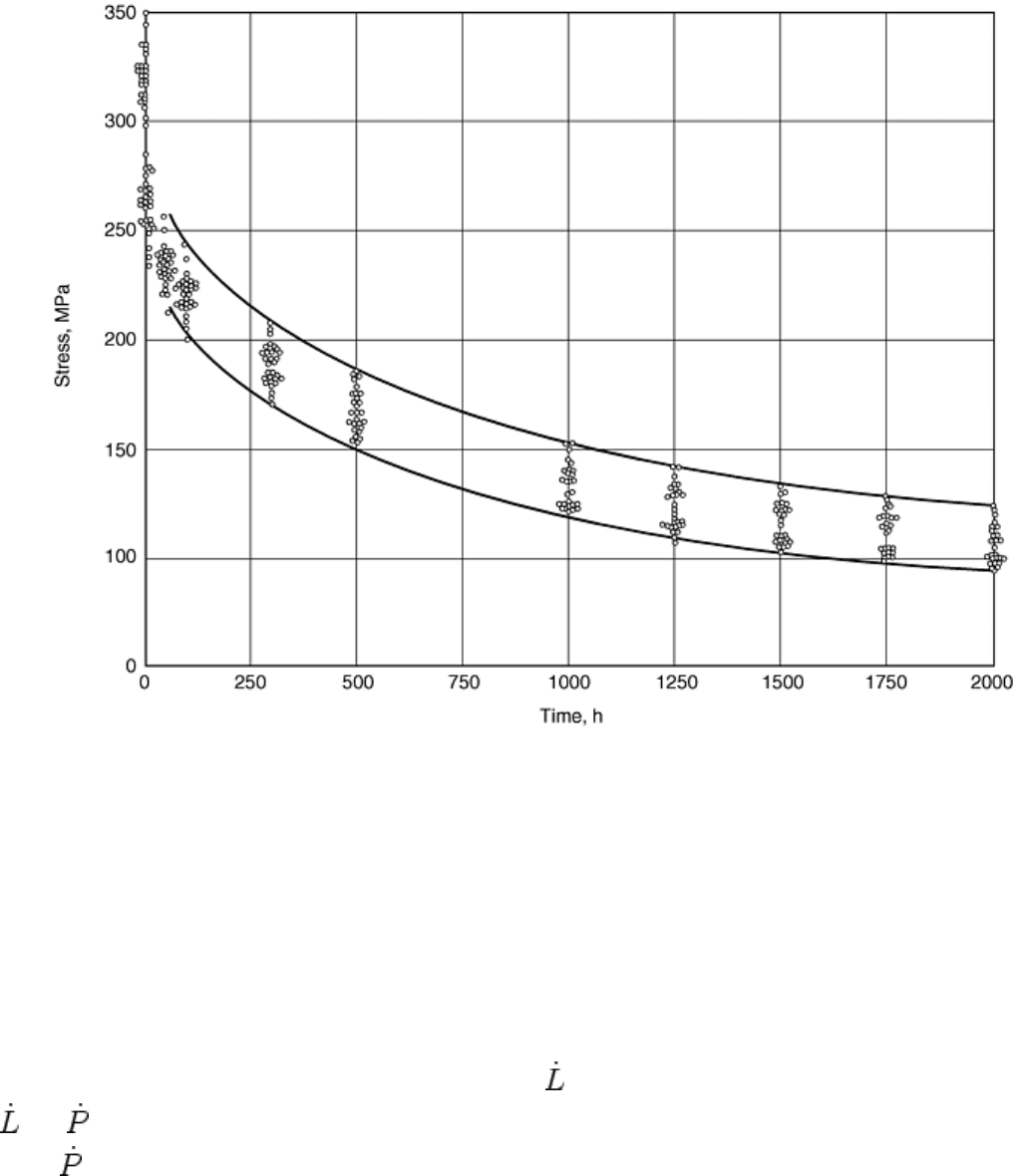
Fig. 5 Repeatability among fifteen laboratories for relaxation of Cr-Mo-V bolting steel from 0.2% strain
at 500 °C
Accelerated Testing
As previously noted, the stress relaxation test is a self-programmed variable stress creep test that can reach
extremely low creep rates in quite short times. Hart (Ref 17) was the first to recognize and exploit the
comprehensive creep rate data that could be generated from the load relaxation test. Hart's objective was to
express a plastic equation of state in terms of the stress versus creep rate relationship, and much of his work
was confined to pure aluminum at room temperature. Hart used a screw-driven tensile machine and calculated
the nonelastic extension rate of the specimen from the load record without the use of an extensometer. When
the crosshead was stopped this nonelastic extension rate ( ) is given as:
= −C
(Eq 4)
where is the rate of change of load and C is the elastic compliance of the entire load train including the load
cell and specimen. To achieve the necessary accuracy with this method, a digital data acquisition and analysis
technique was developed. It was necessary not only to control the specimen temperature accurately but also the
ambient temperature for the machine to maintain constant system compliance. Considerable progress was made
in developing a plastic equation of state for aluminum and identifying scaling laws for this and other pure
metals and some alloys.
One of the early attempts to use this technique as a basis for creep strength evaluation in engineering materials
was reported on Cr-Mo-V steel at temperatures up to 538 °C (Ref 18). Because the system compliance was not
constant during the test at this temperature, an extensometer was used. Although this was a fixed crosshead test,
the creep strain was able to be calculated directly. At any time during the test, it was the sum of the increase in
overall strain, which was measured directly, plus the decrease in elastic strain on the specimen, which was
calculated from the load record and specimen modulus.
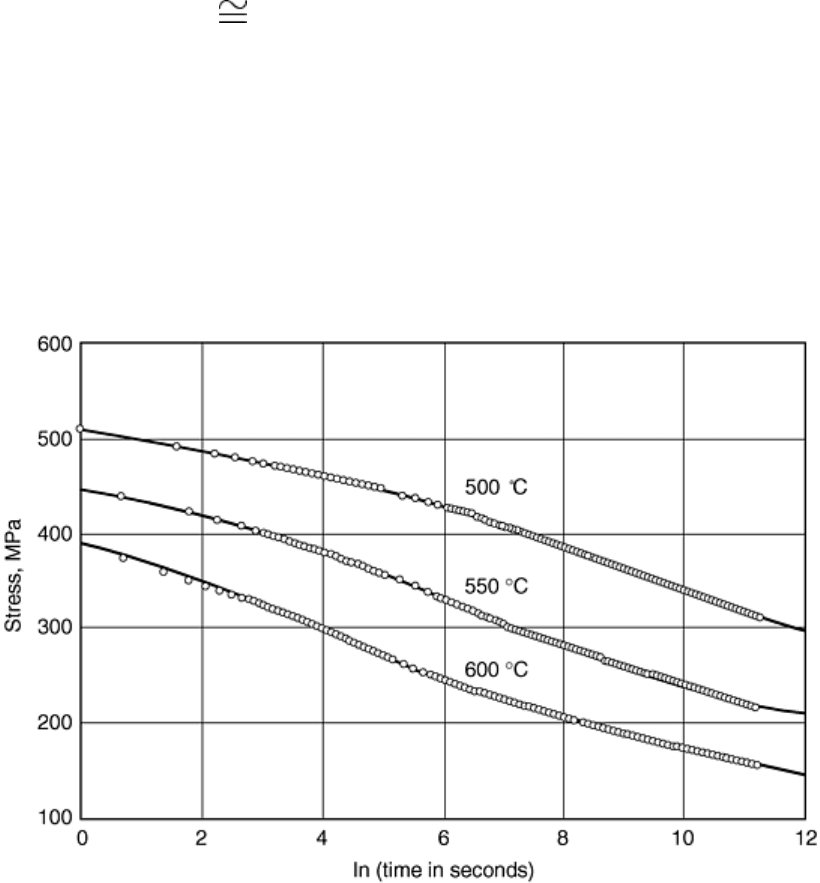
In tests lasting two days, creep rates covering up to six decades in creep rate were obtained using the previously
described method (Ref 18). However, in subsequent tests on all classes of materials, it was decided to use a
fixed strain on the specimen rather than depending on the compliance of the machine. With suitable computer
control for continuous strain adjustment, the tests could be conducted on any type of universal test machine
(Ref 19). Because the specimen total strain was held constant, this was equivalent to using an infinitely stiff
system so that, in principle, test results should be independent of the test equipment. This approach has been
used on a wide range of steels (Ref 18, 20), superalloys (Ref 21), ceramics (Ref 13), and polymers (Ref 22).
An example of this methodology is illustrated in Fig. 6 7 8 for Cr-Mo-V steel (Ref 20). Figure 6 gives the stress
versus natural logarithm (ln) time curves at 500, 550, and 600 °C. The strain was held constant at 0.4%, which
is just beyond the elastic limit ( 0.3%) to minimize transient effects. These curves were fitted with
polynomial expressions, which could then be differentiated to give stress versus creep rate curves directly using
the elastic modulus as described previously (see Fig. 7). As with several other studies, it was found that the data
could be superimposed by horizontal translation with good precision. This means that the curves can be
parameterized using an exponential temperature function. This function was optimized and used to construct
the creep rate/temperature parameter plot of Fig. 8. Also included in the figure are three minimum creep rate
data points at the same three temperatures on the same heat. These were from tests lasting several thousand
hours. The agreement is quite good despite the different deformation paths, especially at the highest
temperature (or longest time) of 600 °C. The parameter plot can also be used as a basis for creep design. As an
example, possible design points at different temperatures are identified on the figure at creep rates of 3 × 10
-11
s
-
1
. This is a rate corresponding to 1% in 100,000 h. The total test time for all the stress relaxation data shown in
Fig. 6 was three days.
Fig. 6 Stress versus natural logarithm for Cr-Mo-V rotor steel at three temperatures form 0.4% strain
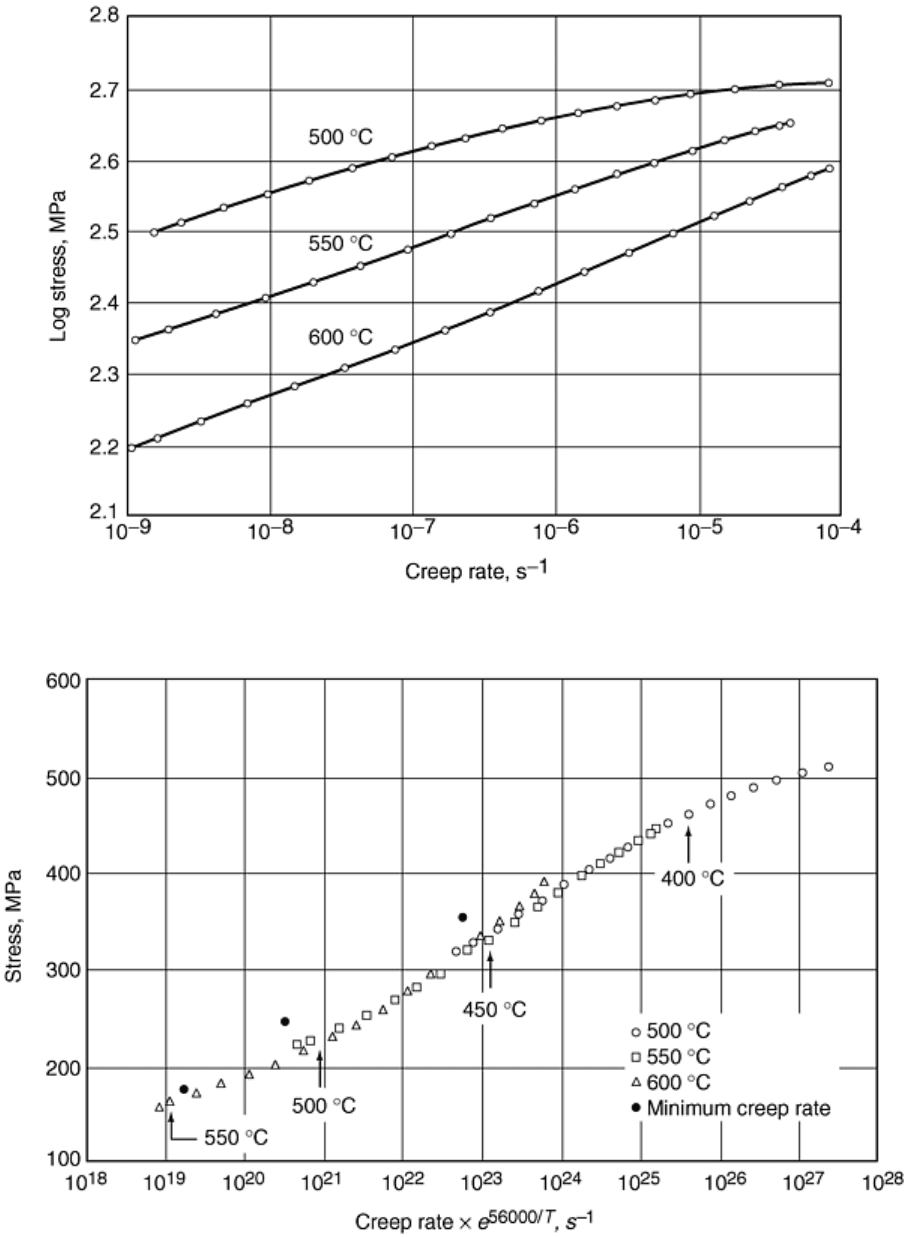
Fig. 7 Calculated stress versus creep rate behavior for Cr-Mo-V steel at three temperatures
Fig. 8 Parametric plot for Cr-Mo-V steel of stress versus temperature compensated creep rate (with
absolute temperature, T, in K) compared with long time minimum creep rate (MCR) data. Possible
design points are indicated at various temperatures.
References cited in this section
11. Standard Methods for Stress Relaxation Tests for Materials and Structures, E 328-86, Annual Book of
ASTM Standards, ASTM, 1991

13. D.A. Woodford, Stress Relaxation, Creep Recovery, and Newtonian Viscous Flow in Silicon Nitride, J.
Am. Ceram. Soc., Vol 81 (No. 9), 1998, p 2327–2332
14. M.S. Loveday and B. King, Uniaxial Testing Apparatus and Testpieces, High Temperature Mechanical
Properties of Materials, M.S. Loveday, M.F. Day, and B.F. Dyson, Ed., NPL, 1982, p 128–157
15. A. Strang, Review of Current International Stress Relaxation Testing Standards, Performance of Bolting
Materials in High Temperature Plant Applications, Institute of Materials, 1995, p 97–114
16. J. Hacon and A Krause, Relaxation Properties of a 1CrMoV Bolting Steel under Uniaxial Tensile Load,
Paper 51, Proceedings Conference Properties of Creep Resistant Steels, VDEL, Dusseldorf, 1972
17. E. Hart, Load Relaxation Testing and Material Constitutive Relations, Stress Relaxation Testing, STP
676, A. Fox, Ed., ASTM, 1978, p 5–20
18. D.A. Woodford, Measurement of the Mechanical State of a Low Alloy Steel at Elevated Temperature,
Metall. Trans. A, Vol 6, 1975, p 1693–1697
19. D.A. Woodford, Test Methods for Accelerated Development, Design, and Life Assessment of High
Temperature Materials, Mater. Des., Vol 14 (No. 4), 1993, p 231–242
20. D.A. Woodford and K. Iijima, Creep Strength Evaluation, Design, and Life Management of Cr-Mo-V
Rotor Steel Using Stress Relaxation Testing, Advances in Turbine Materials, Design, and
Manufacturing, Fourth International Charles Parsons Turbine Conference, A. Strang, W.M. Banks, R.D.
Conroy, and M.J. Goulette, Ed., Institute of Materials, 1997, p 613–624
21. D.A. Woodford, Accelerated High Temperature Performance Evaluation of Superalloys for Process
Optimization and Remaining Life Assessment, ASME IGTI Turbo Expo Conference (Indianapolis, IN),
ASME, 1999
22. G.G. Gryzywinski and D.A. Woodford, Creep Analysis of Thermoplastics Using Stress Relaxation
Data, J. Polym. Eng. Sci., Vol 35 (No. 24), 1995, p 1931–1937
Stress Relaxation Testing
D.A. Woodford, MPa, Inc.
Other Stress States
For the operation of many devices and the relief of residual stresses, the stress state can be complex so that
relaxation tests other than simple tension are more appropriate. The ASTM E 328 testing standard (Ref 11)
covers some of these.
Compression Testing
Figure 9 shows a simple apparatus for conducting long-term compression stress relaxation tests. In this
equipment, the specimen is subjected to an increasing compressive load using a hydraulic ram until the
specified strain is attained. The nut on the load strut is adjusted to maintain a constant compressive strain on the
test specimen. The force required to maintain a constant compressive strain drops as a function of time and
temperature, and it is recorded by a pressure transducer, shown schematically as a pressure gage.
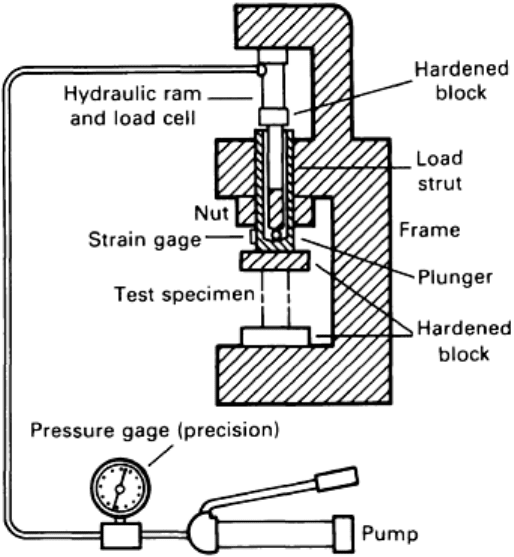
Fig. 9 Apparatus for conducting stress-relaxation compression test
As with tensile testing, the remaining stress can be measured continuously, periodically using step unloading, or
by elastic springback at the end of the test period. In the latter method, the elastic strain calculated from the
difference between the set total strain and the remaining plastic strain is proportional through the elastic
modulus to the relaxed stress. If it is demonstrable that periodic reloading has no effect on the stress relaxation
curve, the same specimen can be reloaded to the same compressed gage length to establish the stress relaxation
curve as a function of time. This method is not accurate if significant anelastic recovery occurs.
In compression testing, the possibility of buckling and barreling must be minimized, and special consideration,
thus, must be given to specimen alignment, precision of the bearing surfaces, and geometry of the test
specimen. It is also possible to use a compression cage in a universal test machine and control directly on an
extensometer positioned on the test specimen. This method would be more suitable for the accelerated testing
method.
Bend Testing
Stress relaxation in bending is very common in flat springs, electronic connectors, and relay springs, and a
number of extensive studies have been reported (Ref 4, 23, 24). In these methods, the outer fiber strain during
bending is held constant.
The change in bending moment during relaxation is determined either by monitoring the applied force
continuously using an apparatus such as that shown in Fig. 10 or by intermittently lifting the specimen just off
its reaction point and measuring the force (or moment) required to accomplish this (see Fig. 11). Alternatively,
the loss in moment can be determined either by using a mandrel (Fig. 12) or a tapered constant curvature
specimen (Fig. 13) and measuring elastic springback upon unloading. A compressive study (Ref 25) at three
different laboratories found that agreement was ±5% stress remaining (Fig. 14) for the following three methods:
• Continuously reading force indicator
• Force required to lift the specimen free of one or more constraints during the test period
• Elastic springback upon unloading at the end of the test period
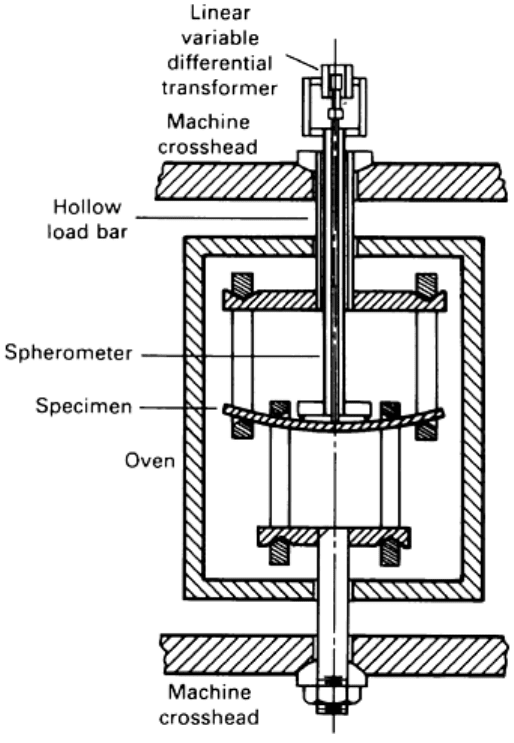
Fig. 10 Stress-relaxation bend test specimen and spheromometer in four-point loaded beam with
uniform cross-section
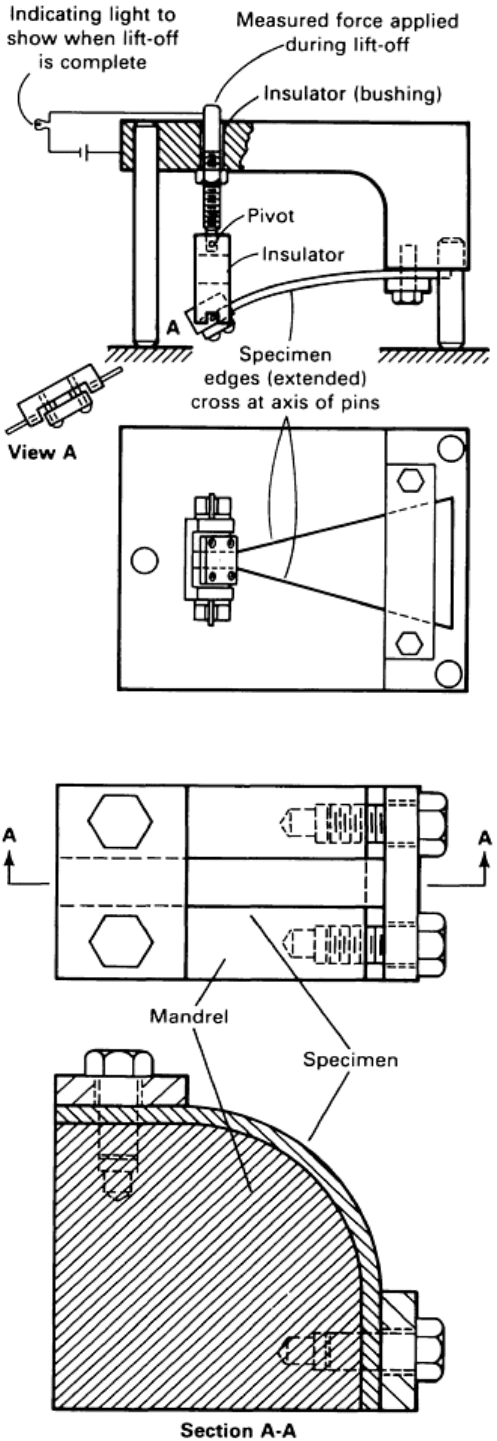
Fig. 11 Stress-relaxation bend test specimen in static fixture for lift-off measurements
Fig. 12 Mandrel type stress relaxation bending test
